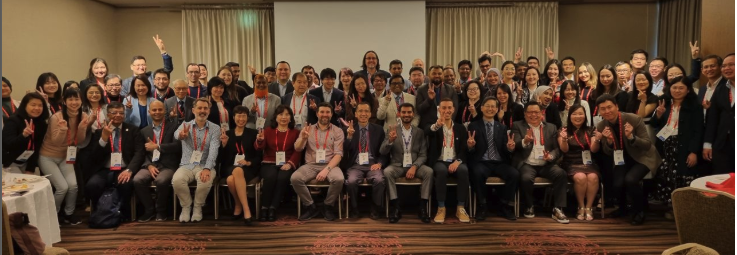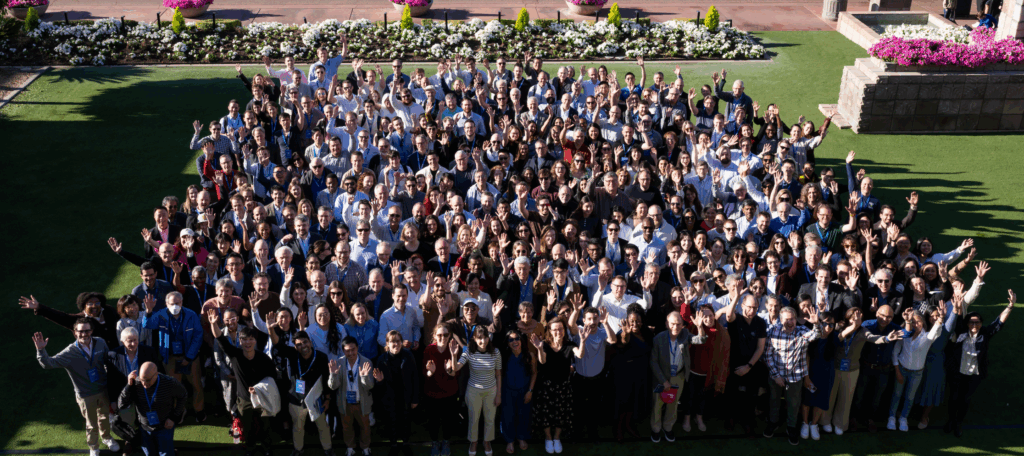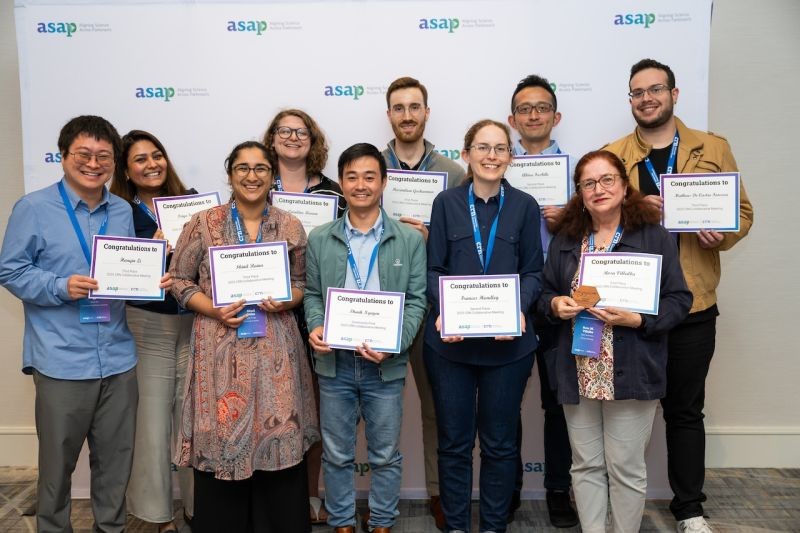Welcome to the ASAP Research Round-Up. Each issue highlights recent advancements across the ASAP portfolio that fill critical knowledge gaps, promote rapid dissemination of scientific insights, expand resource accessibility, and support the next generation of Parkinson’s researchers. By fostering collaboration, developing research-enabling resources, and promoting data sharing, ASAP aims to accelerate discoveries for Parkinson’s disease (PD) research.

In the first quarter of 2025, ASAP advanced new insights into the genetics and functional biology underlying Parkinson’s disease.
Insights into how gene risk contributes to PD
Studies of familial PD have identified 20 high-risk and causative genes, including GBA1, PINK1, LRRK2, and SNCA. Although many of these genes converge on common biological pathways, differences in variant frequency and penetrance across ancestral and regional background differences highlight the critical need to understand the biological consequences of genetic risk. Recent papers from across the ASAP initiative, a few of which are listed below, have increased knowledge of how PD risk variants contribute to disease and expanded our understanding of the genetic architecture of PD.
- Pathogenic variants in GBA1 and PINK1/LRRK2 impair cilia signaling (Team Alessi)
- Assessment of European, African, and Indian populations provided further insight into the genetics of PD, increasing the number of GWAS loci for Europeans from 90 to 157 independent signals and 13 loci in the Indian population (Team GP2)
Insights into how common cellular pathways contribute to PD
Several processes, including mitochondrial respiration and protein clearance, have been implicated in the pathophysiology of PD. However, the mechanisms by which dysfunctions in these pathways result in PD remain unclear. Recent papers from ASAP, some of which are listed below, have contributed to a body of literature detailing the mechanisms underlying mitochondrial and endolysosomal dysfunction in PD.
- Alpha-synuclein fibrils bind and sequester ESCRT-III endolysosomal repair proteins (Team Harper)
- The STING/CASM/GABARAP pathway integrates multiple stimuli to control the kinase activity of LRRK2 at damaged lysosomes (Team De Camilli)
Insights into how brain regions change in PD
While the gradual loss of midbrain dopaminergic neurons is a defining characteristic of PD, less is known about the adaptive and/or pathological alterations that develop throughout disease progression in other brain regions like the striatum and the cortex. Recent papers from ASAP teams, some of which are listed below, have characterized adaptations in brain regions outside of the midbrain in PD.
- Adaptations to muscarinic M4-receptor signaling in the striatum closely follow the temporal and regional pattern of dopaminergic degeneration (Team Edwards)
- Dysregulation of striatal spiny projection neuron excitability contributes to the severity of levodopa-induced dyskinesia (Team Surmeier)
- Alpha-synuclein aggregation results in hyperexcitability of intratelecephalic motor cortex neurons (Team Wichmann)
Driving new research
To continue to improve our understanding of PD, submissions opened for several new RFAs, including:
- Two new Collaborative Research Network (CRN) RFAs focusing on dissecting mechanisms that contribute to PD heterogeneity (application submissions closed on March 20) and the development of novel tools to support PD research (letter of intent applications due on May 5 at 6 PM ET).
- A new Parkinson’s Progression Markers Initiative (PPMI) RFA focused on applying validated biomarker assays to existing Parkinson’s biosamples with the goal of uncovering markers of disease onset, progression, and cognitive decline (letter of intent applications due on May 27 at 5 PM ET).

In the first quarter of 2025, ASAP supported virtual and in-person events to facilitate connections and provide avenues for sharing ideas.
- The Mito911 and LRRK2 Central webinar series, hosted by CRN Teams Hurley and Alessi, occurred monthly throughout the first quarter of 2025.
Interested in viewing some of the past Mito911 events? ASAP created a YouTube playlist containing recordings of some of the past Mito911 webinars to promote connections across the research community. Check it out!
- In March, the GP2 team hosted a successful luncheon at the Asian and Oceanian Parkinson’s Disease and Movement Disorders Congress (AOPMC) in Tokyo, Japan. Leaders and cohort investigators across the region shared GP2’s overarching goals, highlighted significant progress, and discussed new opportunities for researchers to engage and lead GP2 studies. Over 70 researchers attended, sparking valuable discussions about collaboration across the region and globally.

- Members of ASAP’s Collaborative Research Network connected in Phoenix, Arizona, at the 2025 CRN Collaborative Meeting, sparking a dynamic exchange of ideas and partnership-building. The event was filled with engaging conversations and new insights aimed at advancing collaborative research efforts.

- In March, BLAAC-PD held its quarterly investigators’ meeting, allowing site representatives to participate in energizing discussions of case recruitment strategies and recruitment data.
- BLAAC-PD sites are participating in health fairs and community events to connect with community groups and facilitate enrollment. 804 participants have been enrolled in BLAAC-PD as of March 31, including 339 PD cases and 465 unaffected individuals as controls.

Promoting open science is at the core of all ASAP work. We are committed to sharing our philosophy and strategy for implementing our open science policy. Some highlights of our engagement with the broader open science community from the first quarter of 2025 include:
- Discussing the ASAP Open Science Policy and philosophy on the Preprints in Motion podcast
- Writing blog posts about the value of open science
- Including ASAP research citations in the latest release of Data Citation Corpus, increasing visibility, and providing a centralized resource where the research community can access data citations
In the first quarter of 2025, the ASAP community shared new tools and resources for use in the PD research space, including:
- A tutorial and standard operating procedure for using the BugSigDB tool to analyze microbiome data for Parkinson’s disease research (Microbiome Analytics Core)
Interested in viewing more content like this? ASAP created a YouTube playlist containing recordings of tutorials for using tools and resources developed by ASAP-funded researchers. Check it out!
- A nanoflow-based multiomic single-shot technology (nMOST) workflow for lipidomic profiling (Team Harper)
- A novel CRISPR-based tool to silence transposable elements (Team Jakobsson)
- Safety recommendations for handling mouse and human alpha-synuclein pre-formed fibrils (Team Biederer)
- Meta-data reporting templates for studies utilizing PBMCs and clinical data (Clinical and Immune Working Group)
Additionally, the Discover ASAP video series highlighted three resources from the ASAP community:
- HyDrop: A flexible, open-source droplet microfluidic platform (Team Voet)
- Cell-type-directed design of synthetic enhancers (Team Voet)
- SoCal Kinesia and Incentivization for Parkinson’s disease dataset (Team Strick)

In the first quarter of 2025, ASAP enabled researchers to expand their knowledge through a variety of training opportunities by:
- Launching the GP2 micro e-learning program, offering concise, under 10-minute videos on key topics such as Parkinson’s disease clinical insights, genetics, data analysis techniques, and GP2 resources
- Supporting trainee-presented posters and talks at the 2025 CRN Collaborative Meeting

ASAP also supported opportunities for individuals belonging to underrepresented groups by:
- Opening applications for GP2’s Underrepresented Populations PhD Program, which provides three years of funding for trainees who identify as belonging to an underrepresented group to pursue a PhD in PD genetics or a related field (applications due on May 5).
- Requesting information from researchers and organizations in the Middle East and North Africa (MENA) around potential cohorts that could join GP2 and aid GP2 in its mission of being a globally relevant program (application submissions closed on February 14).
If you want to learn more about the ASAP Collaborative Research Network’s influence on the Parkinson’s research space in the last 5 years, check out our Impact Report on Zenodo!
Thank you for engaging with this edition of the ASAP Research Round-Up. We are excited to continue sharing the latest research progress, collaborations, and resource developments that advance our understanding of Parkinson’s disease. As we develop our next issue, we remain dedicated to fostering innovation, inclusivity, and collaboration within the Parkinson’s research community. For more updates on upcoming events, publications, and key developments within ASAP, visit our ASAP Highlights page.

